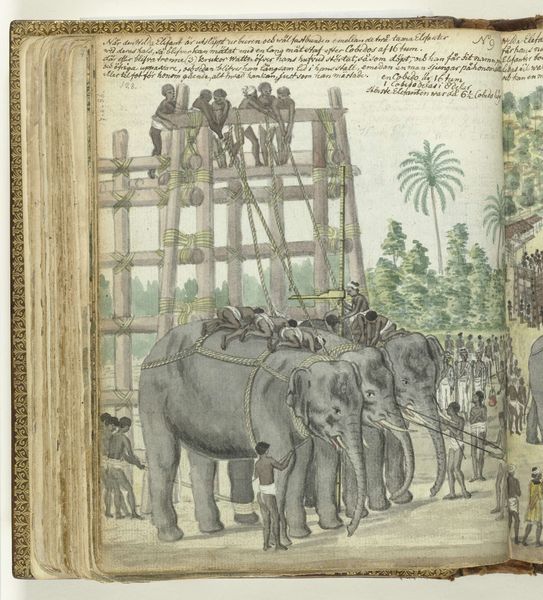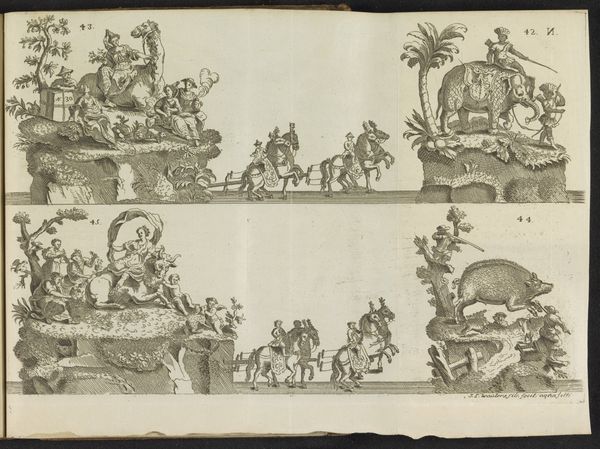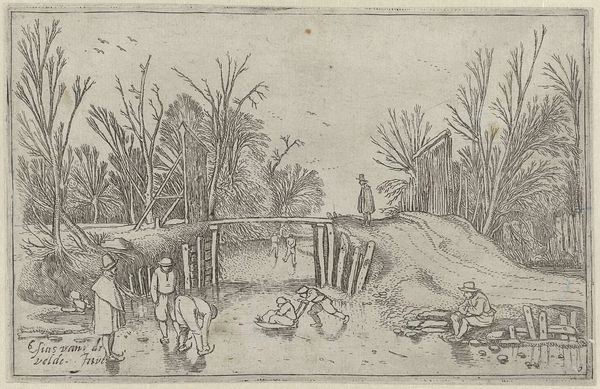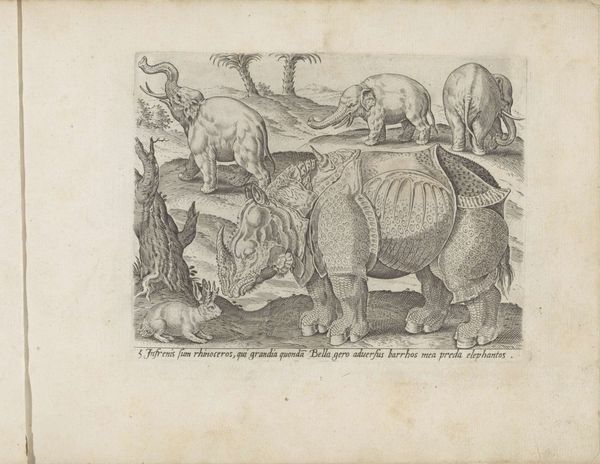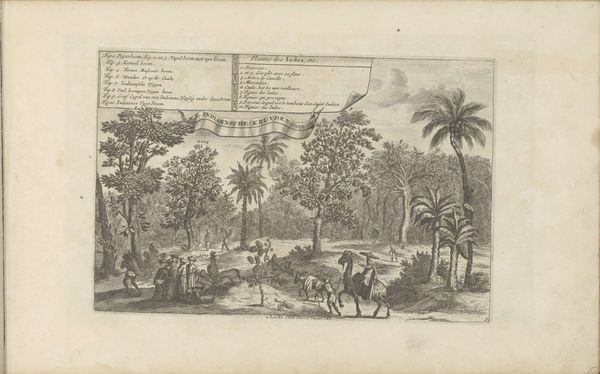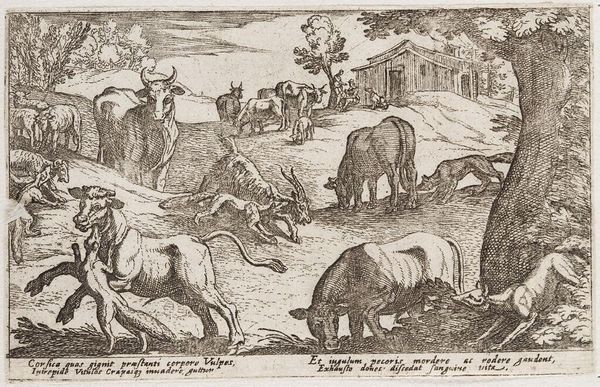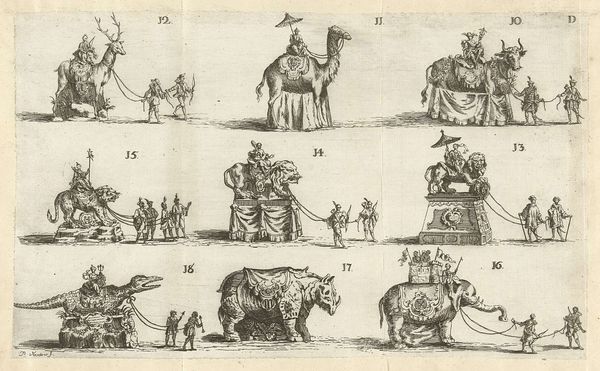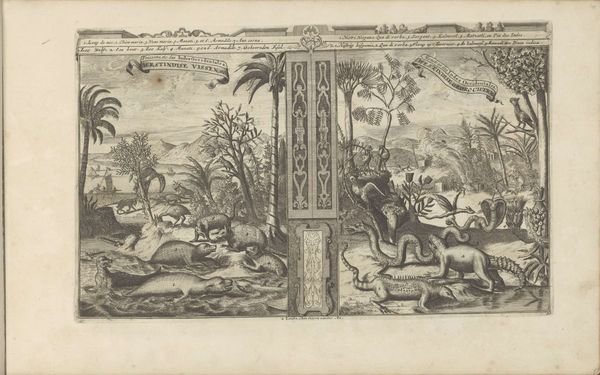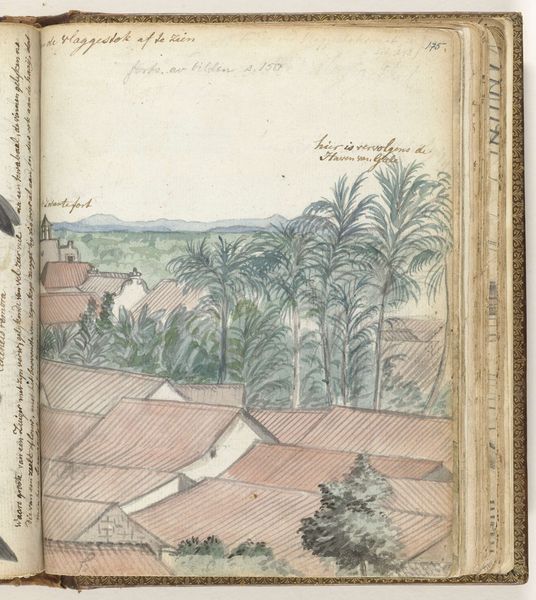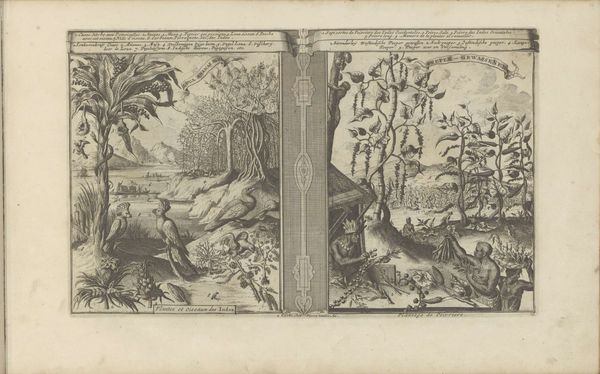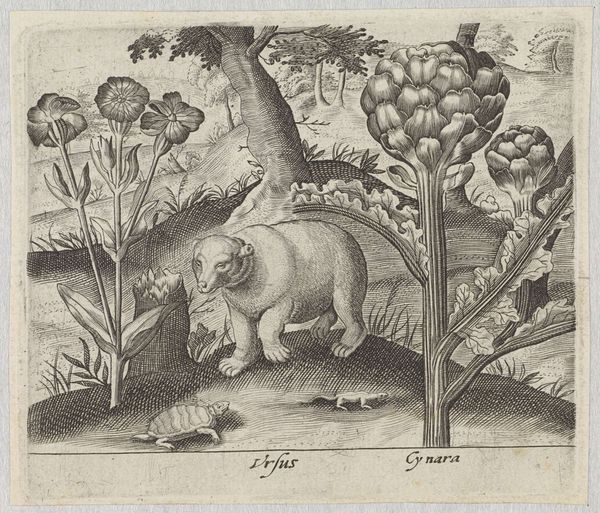
drawing, painting, paper, watercolor
#
drawing
#
painting
#
landscape
#
paper
#
watercolor
#
coloured pencil
#
15_18th-century
#
genre-painting
#
realism
Dimensions: height 195 mm, width 310 mm
Copyright: Rijks Museum: Open Domain
Curator: Looking at Jan Brandes’ watercolor and pencil drawing "Olifantenspeel- en maalkraal," made around 1786, what strikes you first? Editor: It feels incredibly…contained. Caged, almost. You have this mass of elephants crowded within a defined space, contrasting with what should be a sprawling, wild existence. There is some definite tension between the setting and subject. Curator: I’m interested that you read it that way, with the apparent confinement suggesting, perhaps, an unease about the colonial project, as many elephants were traded and shipped for use at the time. I was initially struck by Brandes’ precision in rendering what seems like the inner workings of a compound; this detailed documentation almost seems intended for posterity. Editor: I agree. The meticulousness draws attention to how these creatures were managed, controlled. This space has such strong architectural cues: palisades, raised platforms and an elaborately gated entrance. All imply dominance. What can you tell me of the symbolism here? Curator: Symbolically, it’s a complex image. Elephants themselves held varied significance. In some contexts they represent wisdom and power, but in colonial narratives, their capture and utilization can signify the exertion of control and the subjugation of the exotic, of the natural world. Note too the artist includes annotations alongside this study, almost diagramming the setting's use. Editor: So, it’s more than just a pretty picture of exotic wildlife. It hints at a system, at structures of control. How do you see this playing out in the reception of art from this period? Curator: The display and reception of these artworks certainly played a significant role in shaping public perceptions and even justifying imperial ambitions. Images like this could romanticize colonial life or emphasize the taming of the wild, making them powerful tools of cultural influence. Editor: Yes. It prompts you to think about the politics of observation – who gets to look, what do they see, and what stories are told or left unsaid? Even the color palette, that faded grandeur...it speaks volumes about time, power, and the enduring questions around representation. Curator: Absolutely. Art, as we know, is rarely just about aesthetics, it's about reflecting and perpetuating societal structures and beliefs, and hopefully about questioning them too. Editor: A lot to unpack from one unassuming watercolor and pencil drawing then. Thanks for highlighting it!
Comments
No comments
Be the first to comment and join the conversation on the ultimate creative platform.
